This post may contain affiliate links. Please see our disclosure policy.
Lemon balm jelly is a spectacular homemade herbal jelly, and nothing else tastes quite like it. If you love the taste of fresh lemon balm in the summer, you’ll love lemon balm jelly year-round from your pantry shelf.
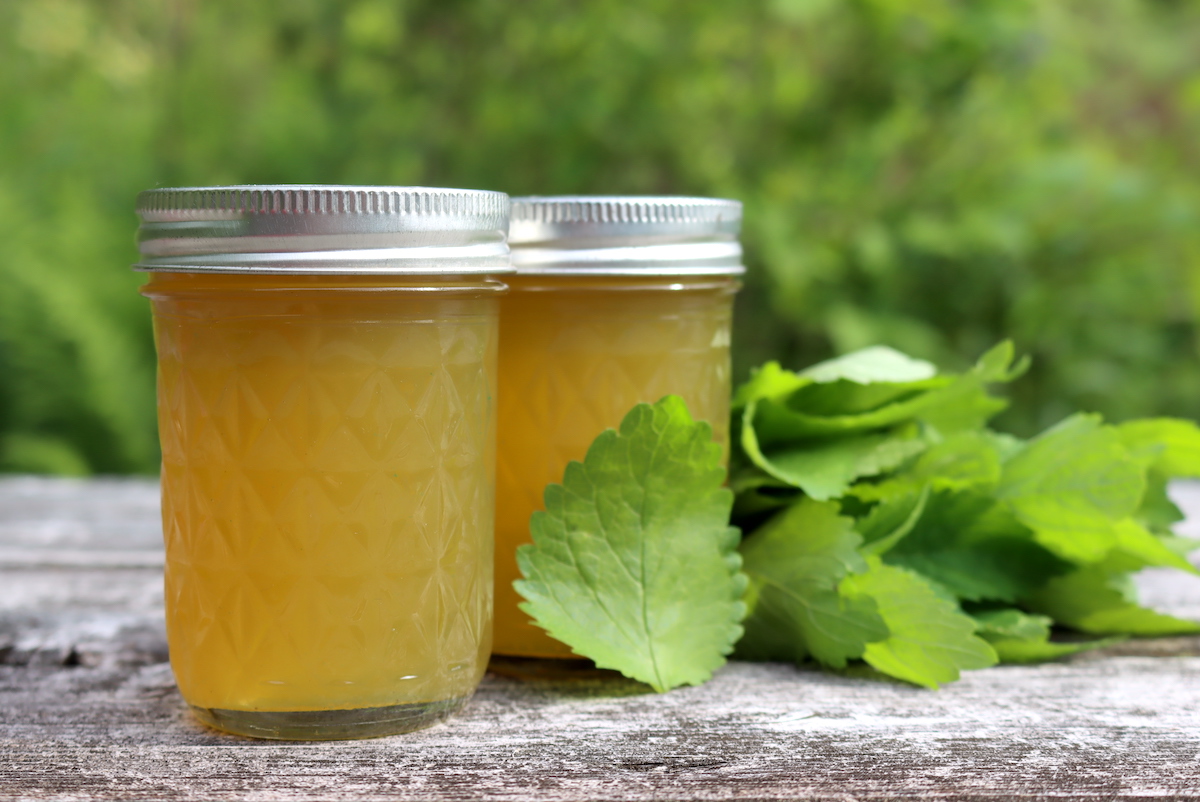
Lemon balm is one of the tastiest garden herbs of summer, and I love just walking through the patch soaking in that fresh smell. Every year, I try out new ways to use lemon balm, and it’s so prolific there’s always plenty of lemon balm growing for my experiments.
It tastes a bit like citrus, with notes of green, a bit of spiciness (it’s in the mint family), and a sweet honey finish.
All of those flavors and aromas are captured perfectly in lemon balm jelly.
If you love lemon balm, then you absolutely need to make this easy homemade herbal jelly.
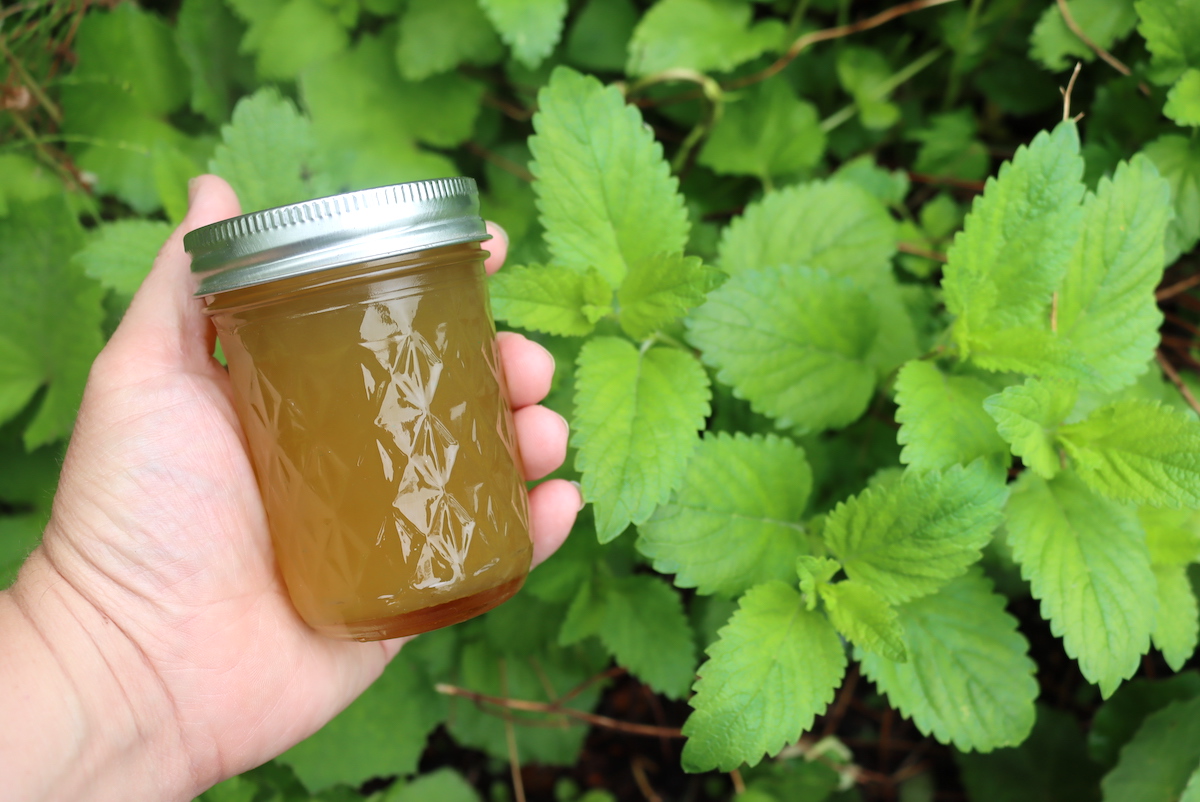
Ingredients for Lemon Balm Jelly
To yield a batch a 5 half-pint jars of lemon balm jelly, you’ll need to following ingredients:
- 3 to 4 cups lemon balm leaves, harvested and cleaned
- 1 box (1.75 oz) pectin (regular or low sugar)
- Sugar (1 to 4 cups, depending on preference)
- 2 tablespoons lemon juice
- 4 cups water
As long as you use low-sugar pectin (such as Sure Jel Low Sugar), you can use anywhere from 1 to 4 cups of sugar in this recipe. Understandably, that is a bit of a wide range – if unsure of how much to add, try 2 to 3 cups of sugar and adjust future recipes to taste!
If using regular Sure-Jell pectin, you’ll need to add the full 4 cups of sugar since this particular pectin requires a 1:1 water-to-sugar ratio.

How to Make Lemon Balm Jelly
Begin by gathering your lemon balm – you’ll need to collect about 3 to 4 cups (about a quart) worth of healthy lemon balm leaves. Be sure to harvest your lemon balm from a clean and safe area, free of herbicides, pesticides, or other pollutants.
Once you’ve collected your quart of lemon balm leaves, you’ll want to clean them. Remove any dirt or residue by gently shaking or lightly washing the leaves.
Now, it’s time to make some lemon balm tea!
Add your freshly cleaned lemon balm leaves to a heat-safe container, such as a large glass measuring cup or pot, and add a quart (4 cups) of boiling water. Steep for 10 to 20 minutes, covering for a stronger flavor.
Once steeped, strain the leaves from the liquid and discard – you’ll just need the liquid for the jelly. Pour the strained tea into a jam pot or saucepan.
Next, add in your lemon juice and bring to a boil. Once boiling, you can add in the pectin, being sure to stir it in to mix completely. Allow this mixture of tea, lemon juice, and pectin to boil for a full minute.
Once this full minute has passed, add in the sugar and stir to incorporate it into the mixture. Be sure to wait a full minute before this step – add sugar too soon after the pectin, and you’ll end up with a jelly that won’t set.
Let the mixture return to boil and boil for another full minute. Remove from heat.
Now you’re ready to ladle your jelly into prepared jars, being sure to leave ¼ inch of headspace. You should end up with about 40 oz (5 half-pint jars) of jelly or slightly less if you used a lesser amount of sugar.
If canning your lemon balm jelly, process the jelly-filled jars in a water bath canner for 10 minutes. These jellies will last 12 to 18 months when stored properly.
For lemon balm jelly intended for more immediate consumption, refrigeration will be fine – the jelly will keep for up to one month. Allow jelly to cool to room temperature before refrigerating.
Lemon balm jelly can be frozen – simply leave extra headspace for expansion and use freezer-safe jars. After thawing you may notice some separation in the liquid – this is natural.
Canning Lemon Balm Jelly
As always, be sure to sterilize your jars before beginning your jelly. If planning on gifting your jelly or storing for longer times, you’ll also want to prepare a water bath canner.
Once the jelly is ready, ladle into prepared canning jars leaving ¼ inch headspace. Clean the rims of any spilled jelly with a clean, damp towel and apply 2-part canning lids. Process in a water bath canner for 10 minutes (15 minutes if above 6,000 feet elevation).
Remove carefully and set on a stable surface out of the way and let the magic happen. Check the seals after 12 to 24 hours – the lids should be curved slightly down. Now your lemon balm jelly is ready for storing or gifting. Lemon balm jelly will keep for 12 to 18 months.
Any unsealed jars should be allowed to cool to room temperature, then refrigerated. These jellies will keep for up to a month.
Lemon Balm Jelly Variations
Some versions recommend incorporating lemon zest in lemon balm jelly for extra citrus flavor. Simply add a tablespoon or so in with the leaves when steeping your tea.
Several additional herbs can be added to lemon balm jelly to give it more complex notes. Some versions include the addition of mint, sage, or lavender into the herbal tea mixture. Try experimenting and see what you prefer!
Several fruit jams incorporate lemon balm into the mixture, including peaches, raspberries, blueberries, and gooseberries. These fruit concoctions are lovely to make in summer when both lemon balm and berries run wild.
Ways to Use Lemon Balm Jelly
Lemon balm jelly has a light citrus flavor, with notes of honey. Subtly herbal, it has a soothing taste that compliments a variety of items. You’ll find lemon balm jelly to be a delicious addition to muffins and scones or paired with goat cheese and fruit on an afternoon cheese plate.
Lemon balm jelly can also be implemented in cooking as a glaze. Simply spoon a dollop of lemon balm jelly onto chicken or fish at the tail-end of cooking for a nuanced herbal-citrus flavor.
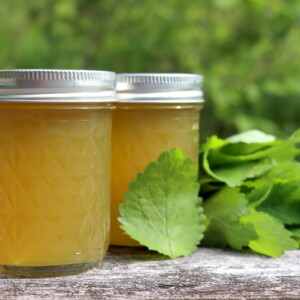
Lemon Balm Jelly
Equipment
Ingredients
- 3 to 4 cups lemon balm leaves, harvested and cleaned
- 1 box powdered pectin, 1.75 oz pectin, 6 Tbsp. (regular or low sugar)
- 1 to 4 cups Sugar, 1 to 4 cups, depending on preference
- 2 tbsp lemon juice
- 4 cups water
Instructions
- Start by sterilizing your jars right before beginning your jelly-making. This will simplify the process.
- Gather your lemon balm leaves from a safe, clean environment that is free of pesticides and other harmful pollutants. You’ll need roughly a quart of leaves.
- Clean your leaves of any dirt, residue, or remaining insects.
- Place the cleaned lemon balm leaves in a heat-safe container and add 4 cups of boiling water. Steep for 10 to 20 minutes.
- Strain the leaves from the steeped tea and add the liquid to a large saucepan or jam pot. Add the lemon juice.
- Bring the mixture to a boil and add in the pectin. Stir to incorporate and boil for one full minute.
- After one full minute is passed, add in your sugar and stir. Boil for another full minute, then remove from heat.
- Ladle into prepared jars leaving ¼ inch headspace. If canning, process in a water bath canner for 10 minutes (or 15 minutes if above 6,000 feet in elevation).
Notes
Sugar Amounts
As long as you use low-sugar pectin (such as Sure Jel Low Sugar), you can use anywhere from 1 to 4 cups of sugar in this recipe. Understandably, that is a bit of a wide range – if unsure of how much to add, try 2 to 3 cups of sugar and adjust future recipes to taste! If using regular Sure-Jell pectin, you’ll need to add the full 4 cups of sugar since this particular pectin requires a 1:1 water-to-sugar ratio.Nutrition
Nutrition information is automatically calculated, so should only be used as an approximation.
Herbal and Flower Jellies
Looking for more flavorful herbal or flower jellies?
- How to Make a Herbal Jelly (Savory or Sweet)
- How to Make a Flower Jelly (with Any Edible Flower)
- Rose Petal Jelly
- Spruce Tip Jelly
- Lilac Jelly
- Dandelion Jelly


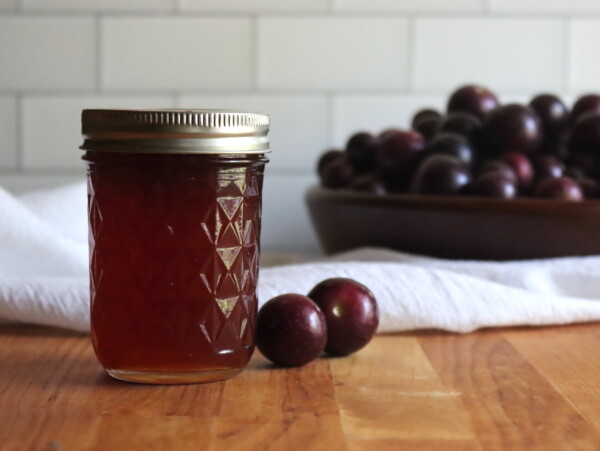
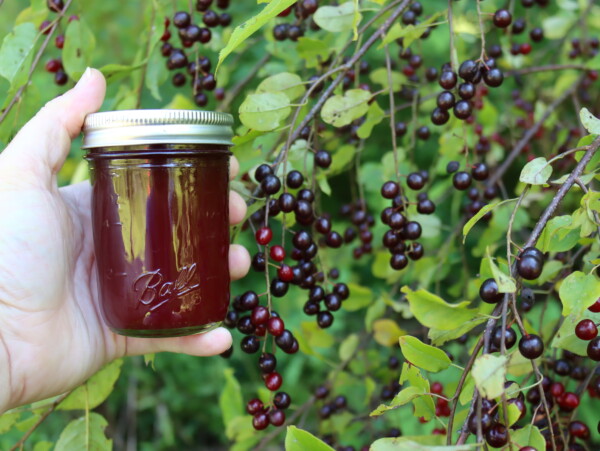
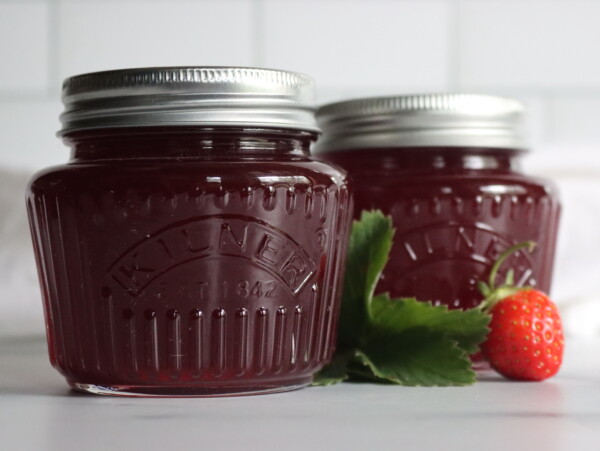
Yuum!
This looks amazing! Question though. Is this safe to consume while pregnant? I plan on using your recipe regardless!
I’m definitely not qualified to advise you on what’s safe and not safe during pregnancy. That said, I can’t imagine why it wouldn’t be safe for pregnancy? Lemon balm is a mild herb and is generally considered safe for pregnancy and nursing, so far as I know. Is there something you’ve read that makes you wonder why it would or wouldn’t be safe?
Thanks for the reply! I had read something about there not being enough study to say it’s safe or not so to possibly stay away but wanted to ask and am doing some extra research on the matter 🙂 I’m definitely making this soon though! I love lemon balm!